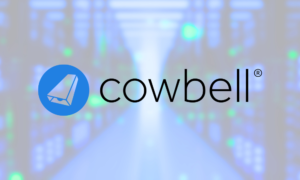For the better part of the last three decades, telematics and usage-based insurance (UBI) have been heralded as the future of automotive insurance. Now that future is coming into focus, with a surge of innovation centering around the customer and the business ecosystems that insurers build to serve them.
That surge is led by the likes of Discovery Insurance (Sandton), which for 10 years has offered a telematics-powered, data-informed UBI product called Vitality Drive in South Africa. Built on a shared-value model that rewards clients for driving well with free fuel and other incentives, the program has produced positive results across the board, including a 24 percent reduction in customer accident frequency, substantial claims savings, improved loss ratios and a 32 percent increase in good drivers on the company’s books during the program’s first six years, all while paying out the equivalent of more than $70 million in incentives to customers.
Behind the program is a points-based incentive system tied to telematics-generated data on customer driving habits, of which the company has collected more than 14 billion km worth to more efficiently price risk. “Where traditional insurers only use demographic factors as a proxy of risk to price insurance, we have shown that using driving behaviour is far superior,” Anton Ossip, chief executive officer of Discovery Insure, said recently. The company lately has expanded Vitality Drive to include partnerships with Avis in South Africa and the Netherlands, ventures in the U.K and Saudi Arabia, and a commercial offering for fleet operators.
As important as onboard, telematics-generated data is in helping insurers price and build incentives into their UBI-based offerings, it’s the business networks they are developing around these offerings that give them much of their appeal. Insurers are discovering that to tap the vast potential of UBI, they need to turn it into a value-added portal that affords customers access to a variety of related services, offers and experiences that go well beyond free fuel. Vitality Drive customers, for example, get rewards and deals from tire and rideshare companies, and even healthcare service providers.
The emergence of business models like these signals nothing less than a paradigm shift in the insurance business, whereby entire integrated business ecosystems (not just individual companies) compete against one another based on the added value they provide to customers. That’s exactly what Karsten Crede, head of ERGO Mobility Solutions, an arm of European insurer Munich Re, said he envisions in partnering with automakers like BMW, Volvo and China’s Great Wall Motors. “Our common goal is to create a leading provider of technology-driven and data-driven product and service solutions in the mobility ecosystem.”
Offerings like Discovery’s Vitality Drive highlight the immense potential of ecosystem-based, behavior-driven UBI solutions. As pioneers in the UBI market are discovering, to tap that potential, they will need to focus on enriching not only the customer-facing side of their offerings, but also the digital capabilities and infrastructure to support them, including these critical areas:
- Technology partnerships to make UBI a viable, efficient proposition. Instead of developing UBI solutions entirely by themselves, with all the investment that entails, insurers like AIG are partnering with insurtech up-and-comers like Amodo to fortify the tech stack behind their UBI offerings. AIG has integrated Amodo’s unique mobile phone-enabled telematics capabilities into its AIG on the Go UBI app, which is built on a pay-how-you-drive model. By working with insurtech companies with robust digital capabilities, insurers themselves can focus more on their core business strengths and worry less about the technological aspects of UBI, where they may not be as strong. Using Amodo’s telematics technology, which relies on the driver’s mobile phone rather than expensive telematics hardware and software installed on the vehicle, can help to bring down the cost of implementing UBI, for example.
- A powerful, flexible digital platform to enable connectedness, trust and the free flow of data and insight both internally and across the business ecosystem. Even with digitally advanced partners, insurers themselves still need a versatile, integrated digital platform, one that enables them to engage seamlessly with those partners and other members of their UBI ecosystem. This platform can also provide enterprise-wide control over, and insight into, their own operations, from underwriting-> to claims-> to finance-> and beyond.
For many, that means shedding legacy business platforms in favor of open, cloud-based platforms that provide extreme agility in designing, developing, testing, launching and tailoring UBI products and services. By doing so, insurers can enhance their speed to market so innovation cycles are measured in weeks or months, rather than years. It’s all about “better products, faster.” And that’s only possible if insurers can readily share information and insight with their ecosystem partners, including those from other related industries.
With such a digital platform in place, insurers can readily add new partners and services to a UBI ecosystem. This is particularly important given the accelerating pace of innovation in the UBI space, where we soon could see ecosystems evolve to blend mobility with general health and wellness, banking, personal finance and more. All this will, of course, be customer-driven.
- Tools to analyze, manage and enhance the customer experience around UBI. U.S. auto insurers have returned more than $14 billion to their customers in response to reduced driving during the pandemic, according to Insurance Information Institute estimates, an indication they’re already becoming more customer-centric. The elevated outcomes and experiences that insurers deliver via UBI models and ecosystems can generate even more trust, good will and stickiness with customers. What’s more, by engaging and empowering customers through mobile apps, personalized portals and useful customized information around UBI, insurers can position themselves as true customer allies. Meanwhile, by consistently gathering feedback from customers via quick in-app surveys, they can work to improve the quality of their UBI offerings.
- Advanced analytics capabilities to turn data into strategic insight. To get UBI right, insurers and their ecosystem partners need data—and the ability to analyze huge amounts of it, quickly. They need to capture streams of data from telematics, driving apps, mobile devices and other Internet of Things (IoT) connections, and then combine it with data from ecosystem partners. Then they can apply artificial intelligence, machine learning and other advanced analytics techniques to that data to measure UBI risk and price premiums almost in real time, and do so more precisely and profitably. Top performers in the UBI space likely will have hundreds of predictive models to optimize everything from pricing, to claims, to customer acquisition. Some of the data gathered via a UBI service also will have added value to automakers and tire companies, as well as to customers, if it tells them how to change their driving habits to lower their rates, for example.
Just as real estate is about “location, location, location,” the mantra around insurance products like UBI must be “the customer, the customer, the customer.” By following that mantra, insurers will be well-positioned to take advantage of a market that by Ernst & Young’s projections, will grow exponentially, to $96 billion, by 2025.








